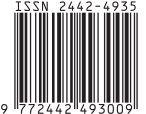Perbandingan Usia Kronologis dengan Estimasi Usia menggunakan Metode Camiriere pada Pasien Laboratorium Radiodiagnostik FKG Universitas Brawijaya
DOI:
https://doi.org/10.19184/stoma.v19i1.30692Abstract
Forensic odontology is one of the most reliable methods of identifying victims because it can withstand extreme environments and for a long time. One of the applications of the forensic branch is age estimation. One method of estimating age is the Cameriere method. This method uses a linear regression formula to calculate the estimated age in children by measuring the open apical using a panoramic radiograph. This study aimed to determine the difference between age estimation using the Cameriere method and chronological age in Radiodiagnostic Laboratory of the Faculty of Dentistry Brawijaya University patients. This study was an analytic observational study with a cross-sectional design 60 samples aged 5-15 years. Tooth measurements were calculated using the Image J application and then entered into Excel Program to calculate the estimated age using the Cameriere method. The Wilcoxon test showed there was no significant difference between the age estimation using the Cameriere method and the chronological age of the Radiodiagnostic Laboratory of the Faculty of Dentistry Brawijaya University patients (p> 0.05). Thus Cameriere could be used as a way to estimate the age of children aged 5-15 years in the Radiodiagnostic Laboratory of the Faculty of Dentistry Brawijaya University.







